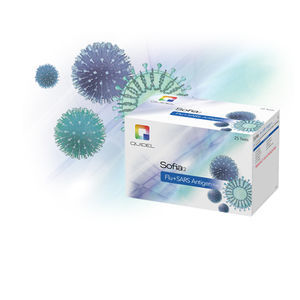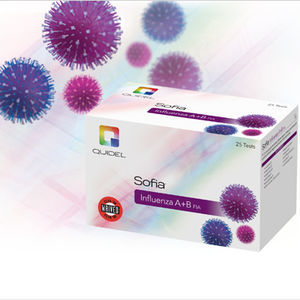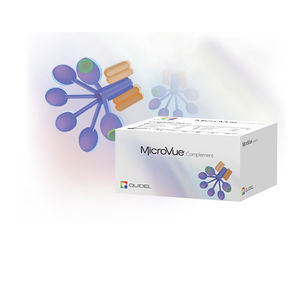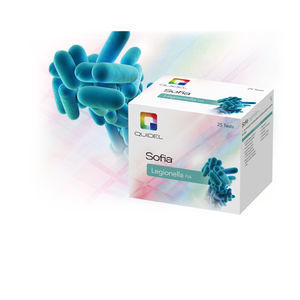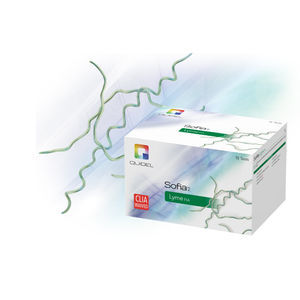
- Laboratory
- Laboratory medicine
- Rapid serum test
- Quidel Eye Health
Rapid autoimmune disease test MicroVue CIC-Rajiproteinserumplasma
Add to favorites
Compare this product
Characteristics
- Applications
- for autoimmune diseases
- Tested parameter
- protein
- Sample type
- serum, plasma, cell
- Analysis mode
- ELISA, enzymatic, biochemical
- Result display time
120 min
Description
The MicroVue CIC-Raji Cell Replacement EIA measures C3d-bound CIC present in human plasma or serum.
Formation of immune complexes is a protective and usually benign process of a normally functioning immune system. CIC are removed from circulation by a number of complex biochemical, enzymatic and cellular processes. Key to all of these, however, is the complement system.
In certain disease states, immune complexes may initiate complement-mediated damage of various organs and tissues. This activation of complement may begin a series of potentially destructive events including cell lysis, the production of anaphylatoxins, leukocyte stimulation and activation of macrophages. Major tissue damage can also occur when IC fix to cell membranes as in some cases of glomerulonephritis.
More than 40 assays have been developed to measure CIC's, many of these require multiple complex steps and sophisticated equipment. Since the characteristics of CIC vary widely, none of these assays has been accepted as a standard. In fact in a comprehensive study, the WHO determined that no single method was appropriate to measure CIC in all disease states and that a combination of two different methods and techniques be used.
The MicroVue CIC-Raji Cell Replacement EIA uses a proprietary monoclonal antibody to a common neoantigen expressed on C3d, iC3b, and C3d, g to capture C3d containing immune complexes in human serum or plasma.
Catalogs
No catalogs are available for this product.
See all of Quidel Eye Health‘s catalogsRelated Searches
- Assay kit
- Blood assay kit
- Serum assay kit
- Immunoassay assay kit
- Plasma assay kit
- Blood rapid diagnostic test
- Rapid lateral flow test
- Immunoassay rapid diagnostic test
- Cassette rapid diagnostic test
- Rapid virus test
- Serum rapid diagnostic test
- Plasma rapid diagnostic test
- Optical assay kit
- Infectious disease rapid diagnostic test
- Whole blood rapid diagnostic test
- Rapid respiratory infection test
- ELISA assay kit
- Urine rapid diagnostic test
- Research assay kit
- Strip rapid diagnostic test
*Prices are pre-tax. They exclude delivery charges and customs duties and do not include additional charges for installation or activation options. Prices are indicative only and may vary by country, with changes to the cost of raw materials and exchange rates.






